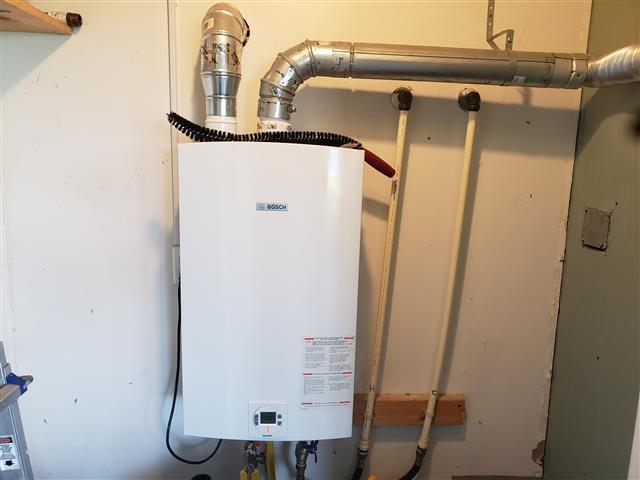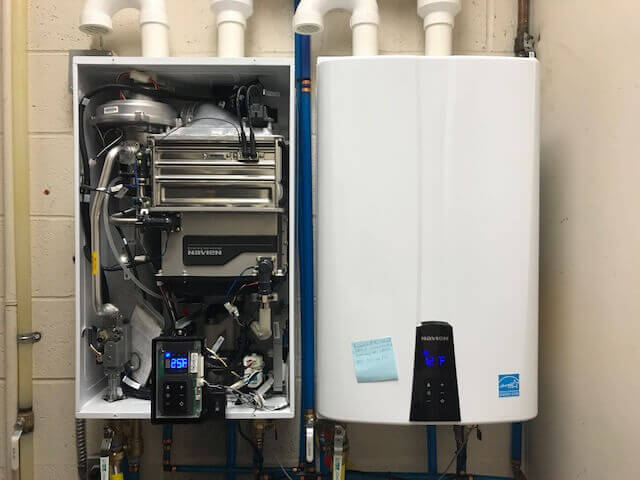
Tank Water Heater History
The Water heater is just one of ignored home appliances in homes, typically stashed in some edge of the garage. We don’t pay much interest to it up until it damages. It has been around in its current form for a long time. It was designed in the 1889 by Edwin Ruud and also it hasn’t changed much since then. It includes a 40 or even more gallon round container with a gas burner or sometimes an electric element. It heats the water slowly as well as maintains it warm at all times.
Its burner has a pilot burner that is burning gas at all times and the main burner comes occasionally into activity to heat the water once more because the water in the container has actually cooled off. Well, that goes on day after day even if the water is never made use of. That is due to the fact that the water sheds its warm to the surrounding. It is like having a kettle loaded with water on the chef top regularly.
The newer storage tank water heaters are much better shielded than before to decrease the standby warm loss but never ever the much less they lose heat and the water should be frequently reheated. In today’s times where energy has ended up being pricey and also will certainly end up being much more that is a complete waste of power as well as cash. It strains the environment also unnecessarily and also contributes to planet warming as well as climate modification.
The container hot water heater is likewise extremely ineffective, not just sheds its warm, standby warm loss, yet it also does not do an excellent job home heating the water via its intrinsic style. When new they have an effectiveness of concerning 55%. Relying on the solidity of the water it can quickly fall to 30 or so percent because of water debris accumulation at the end of the storage tank, much like the kettle in which water debris accumulate when water in it is warmed over and over. The storage tank WH has health and wellness concerns as well. Germs as well as germs love the standing warm water and grow quickly as well as quickly in that environment.
The water is usually not warm adequate to kill them. With time there can likewise be rust develop in the water storage tank that lowers the heating performance of the WH additionally of it being supplied to the shower room faucets and cooking area sink. Occasionally you can see the corrosion in the ceramic tile grout staining. Not all of that is undesirable but a great deal of times just unfavorable.
The storage tank WH does push out a few of these sediments and also several of it continues to be in the container and also maintains developing. It is not simply in the washrooms we utilize hot water although one of the most of it is being utilized for showering. We use hot water likewise to clean dishes sometimes and also prepare food. Currently if you could see all those microscopic foreign components, microorganisms and sediments you would think again of using it for food or perhaps bathing the children in tub with that water.

It has actually occurred to everyone that we lacked warm water showering or a bath. As well as there is no quick warm up of the water. The WH is just not made for that as well as it takes a lot of energy as well as time once again to heat 40 or more gallons of water. A great deal of households need to schedule their showers since in a family with numerous individuals you rapidly lack hot water. To make that warm water last a little bit longer you can run the WH at a greater temperature level; claim 180 degree Fahrenheit so that you mix much more cold water with the warm water. Running the WH at greater temperature wastes even more power and also with it obviously cash.
Tankless Water Heater Background
The initial tankless WH was invented by an Englishman called Maughan in the 1870s. The concept of tankless WH is to warm the water only when you need it and also practically instantaneously, so no tank of hot water. Like many developments, tankless hot water heater went through several designs over the decades. A lot of the tankless water heater was made to be utilized at factor of use.
That is that anywhere you needed hot water you would certainly set up an electric or gas-powered unit and have hot water at the point you required. This minimized additionally the plumbing of a home since you didn’t need to run an additional water pipe for the warm water. Typically you had a little device in the kitchen; the unit incorporated the kitchen area tap as well as perhaps a very tiny storage tank of one gallon or so.
